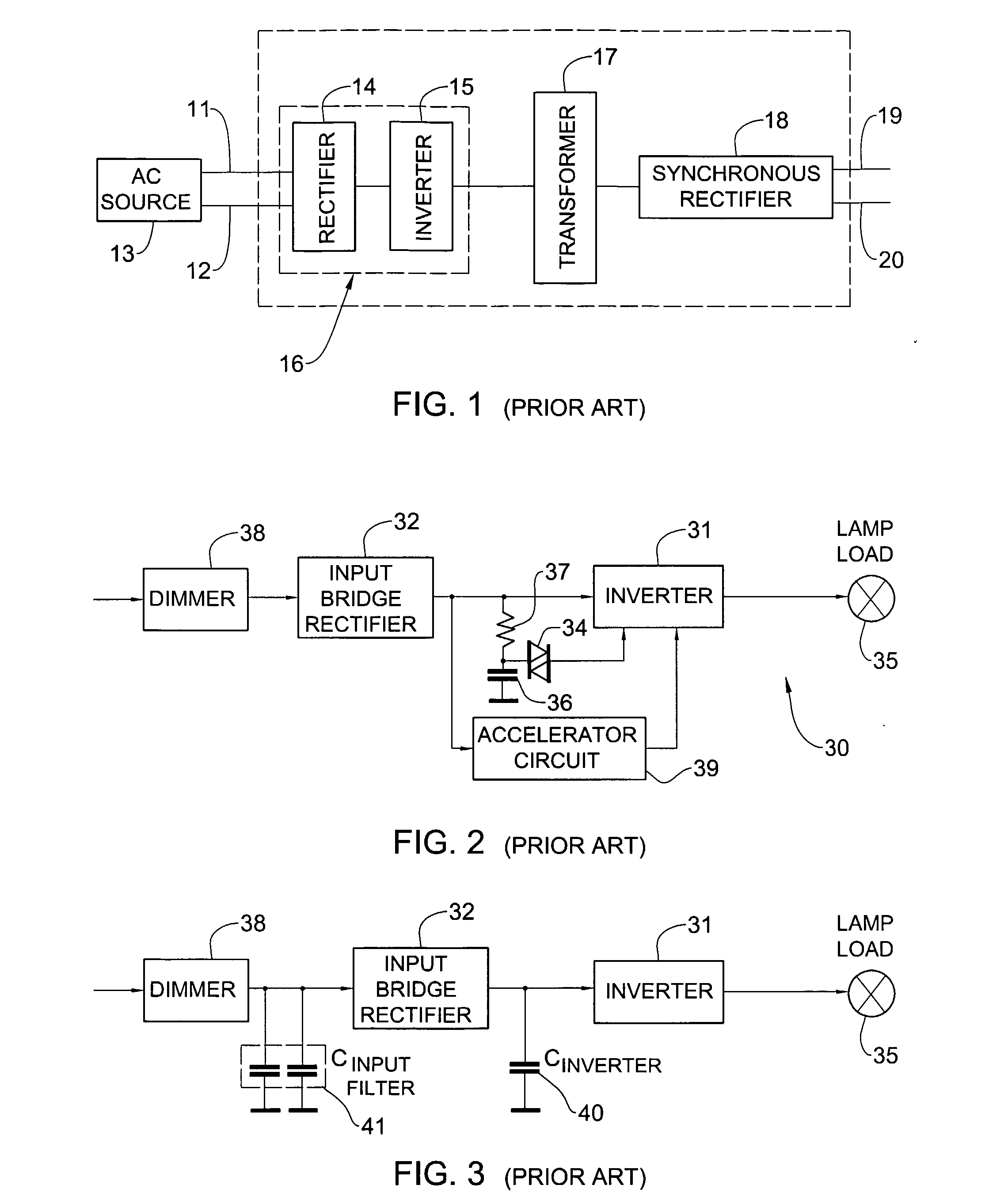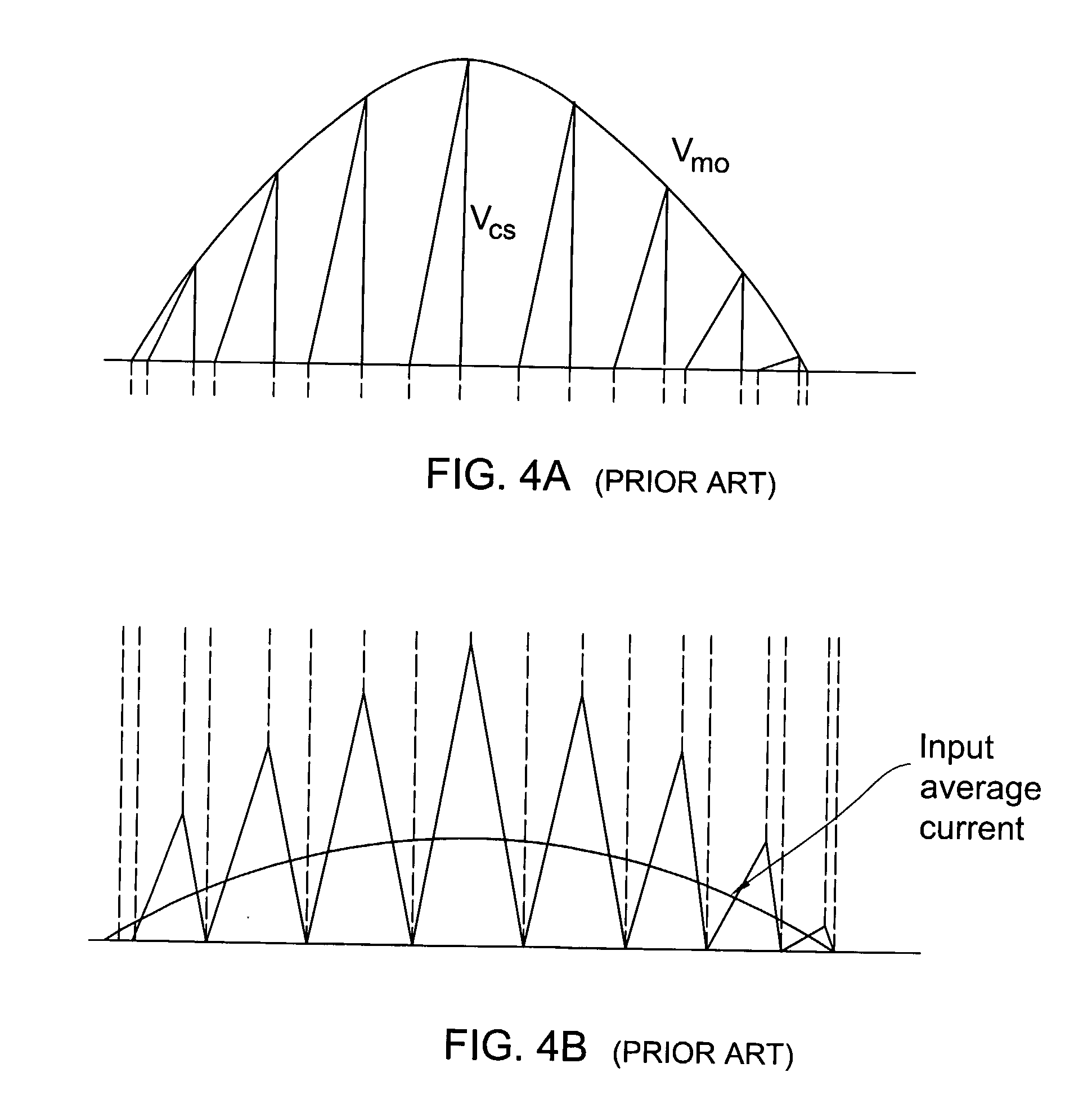Controllable Power Supply Circuit for an Illumination System and Methods of Operation Thereof
a power supply circuit and controllable technology, applied in the direction of electric variable regulation, process and machine control, instruments, etc., can solve the problems of affecting the functioning of the whole dimmer-inverter system, instability of switching moment, lack of dimmer load, etc., and achieve the effect of increasing the duration of said voltage slices
- Summary
- Abstract
- Description
- Claims
- Application Information
AI Technical Summary
Benefits of technology
Problems solved by technology
Method used
Image
Examples
Embodiment Construction
[0063]FIG. 5 is a block diagram showing functionally a variable power supply circuit according to the invention shown generally as 50 having an improved inverter ignition circuit 51 for use with a current feedback inverter. Regardless of the application for which the inverter is required, such an inverter must be ignited by an ignition pulse. The power supply 50 comprises a dimmer 52 coupled to the input of an input bridge rectifier 53, whose output is coupled to an inverter 54 in known manner for producing an output voltage that is fed to a lamp 55. The ignition circuit 51 is controlled by an impulse timer 56 energized by an energy accumulator circuit 57 and responsively coupled to a current sensor 58 and threshold detector 59.
[0064]FIG. 6a is a circuit diagram showing schematically a detail of the inverter ignition circuit 51 illustrated in FIG. 5. The inverter comprises a bridge of four bipolar NPN junction transistors 61, 62, 63 and 64. The collectors of the transistors 61 and ...
PUM
 Login to View More
Login to View More Abstract
Description
Claims
Application Information
 Login to View More
Login to View More - R&D
- Intellectual Property
- Life Sciences
- Materials
- Tech Scout
- Unparalleled Data Quality
- Higher Quality Content
- 60% Fewer Hallucinations
Browse by: Latest US Patents, China's latest patents, Technical Efficacy Thesaurus, Application Domain, Technology Topic, Popular Technical Reports.
© 2025 PatSnap. All rights reserved.Legal|Privacy policy|Modern Slavery Act Transparency Statement|Sitemap|About US| Contact US: help@patsnap.com



